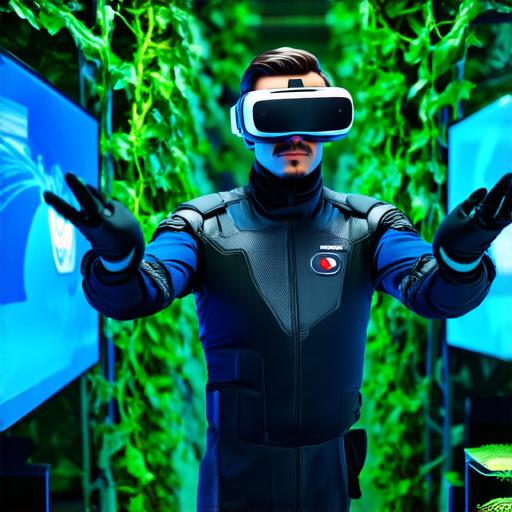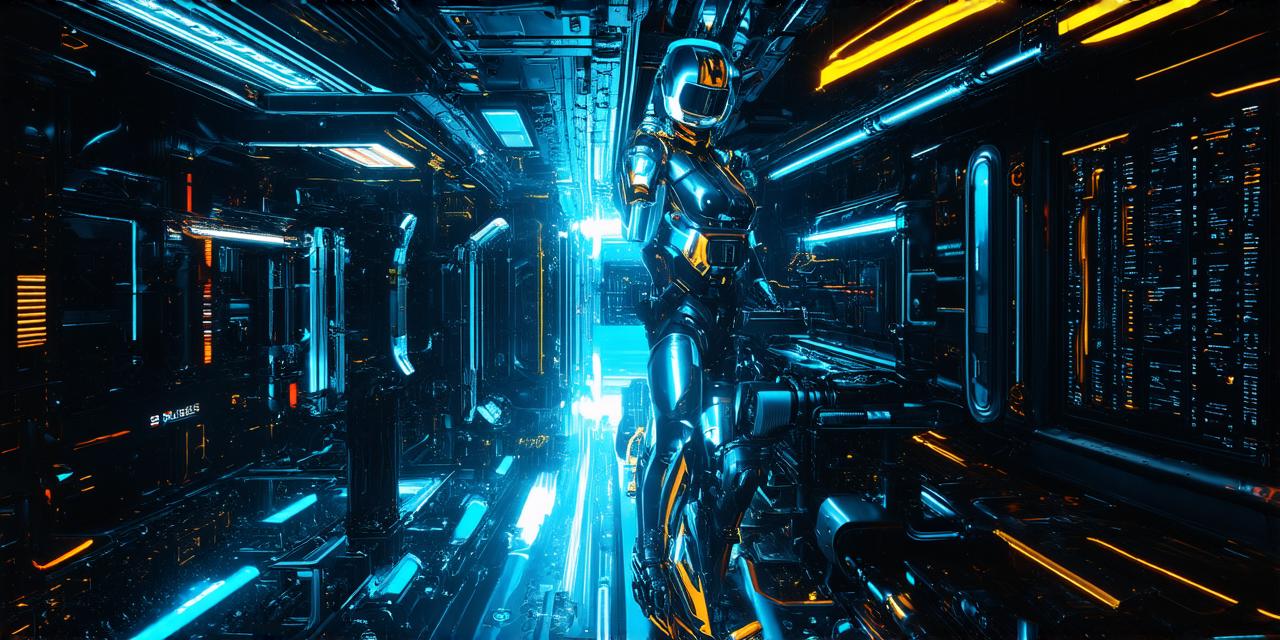What is Virtual Reality?
Virtual reality (VR) is a computer-generated simulation that creates an artificial environment that can be experienced through specialized headsets or displays. These devices track the movements of the user’s head, allowing them to move within the virtual world and interact with virtual objects in real-time.
The Mechanics of Virtual Reality: Understanding the Key Components
-
Hardware: The first step in creating a virtual reality experience is selecting the appropriate hardware. There are several VR devices on the market, including headsets, controllers, and sensors. These devices work together to track the user’s movements and create an immersive environment.
-
Software: Once the hardware is selected, developers must create the software that will power the VR experience. This includes designing the virtual world, creating interactive objects, and programming the behavior of these objects. The software must also account for the limitations of the hardware and optimize performance to ensure a smooth and seamless experience.
-
User Interface: The user interface (UI) is critical to the success of a VR experience. Developers must create an intuitive and easy-to-use UI that allows users to navigate the virtual world and interact with objects in a natural way. This includes designing menus, controls, and other interactive elements that seamlessly integrate with the VR hardware.
-
Tracking: The tracking system is responsible for accurately tracking the user’s movements within the virtual world. This involves using sensors and cameras to detect the position of the user’s head and controllers, and using this data to update the virtual environment in real-time.
-
Rendering: Rendering is the process of generating the 3D graphics that make up the virtual world. Developers must optimize their rendering algorithms to ensure smooth performance and minimize lag, which can cause motion sickness and other negative effects.
-
Audio: The audio component of a VR experience is equally important, as it helps to create a fully immersive environment. Developers must carefully design the audio elements of their experience, including background music, sound effects, and spatial audio, to enhance the overall experience.
Case Studies and Personal Experiences
To better understand the mechanics of virtual reality technology, it’s helpful to look at real-world examples of successful VR experiences. One such example is the popular game “Beat Saber,” which has become a cultural phenomenon thanks to its engaging gameplay and immersive environment. The game relies heavily on the user interface, which allows players to easily navigate the virtual world and interact with objects in a natural way. The tracking system is also critical to the success of the game, as it ensures that the player’s movements are accurately reflected in the virtual world.
Another example is the use of VR in medical training. By creating realistic simulations of surgical procedures, medical students can practice and hone their skills in a safe and controlled environment. This not only saves lives but also allows for more efficient and cost-effective training. The software component of these simulations is particularly important, as it must accurately model the behavior of biological tissues and organs to create a realistic and challenging experience.
Real-Life Examples and Comparisons

To further illustrate the mechanics of virtual reality technology, let’s compare it to other forms of media. Traditional video games, for example, rely on a 2D interface and a fixed perspective. This limits the level of immersion and interaction that players can have with the game world. In contrast, VR provides a fully immersive experience that allows users to move within the virtual world and interact with objects in real-time.
Film is another form of media that can be compared to VR. While films provide a visual experience that can be engaging, they are limited by the 2D screen and fixed perspective. In contrast, VR provides a fully immersive experience that allows users to feel as if they are part of the action. Additionally, VR experiences can be interactive, allowing users to influence the outcome of the story or environment in real-time.
Another example is the use of VR in education and training. By creating realistic simulations of real-world scenarios, such as flight training or driving lessons, students can gain hands-on experience without the risk of harm. This not only saves time and money but also allows for more effective learning outcomes.
Conclusion
Virtual reality technology is a powerful tool that has the potential to revolutionize the way we interact with the digital world. To create engaging and interactive VR experiences, developers must understand the key components of VR and how they work together. By examining real-world examples and comparing VR to other forms of media, we can gain a deeper understanding of the mechanics of this exciting technology.
